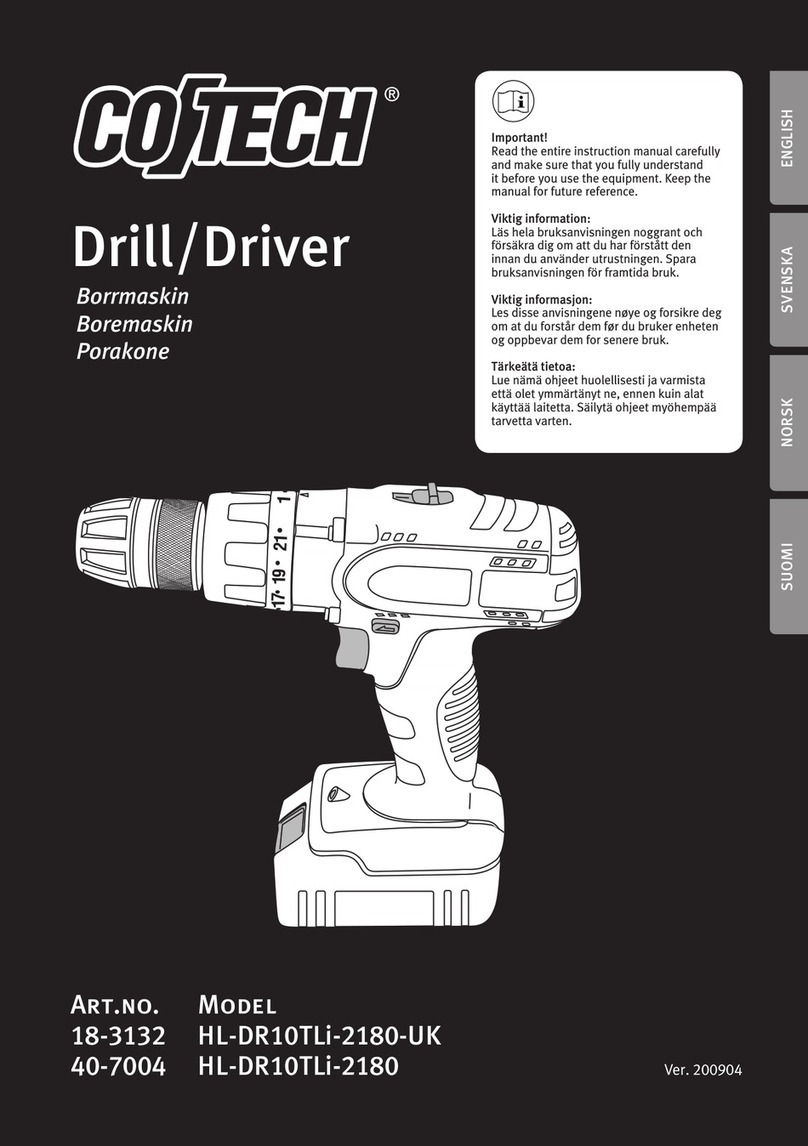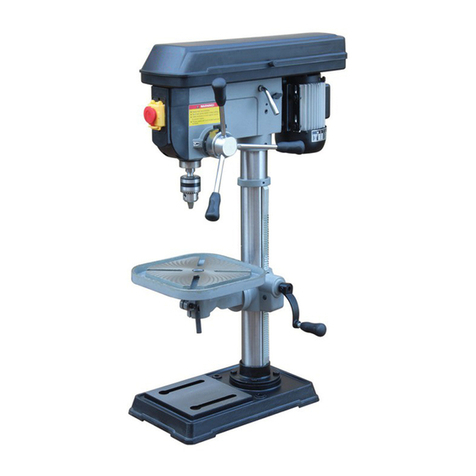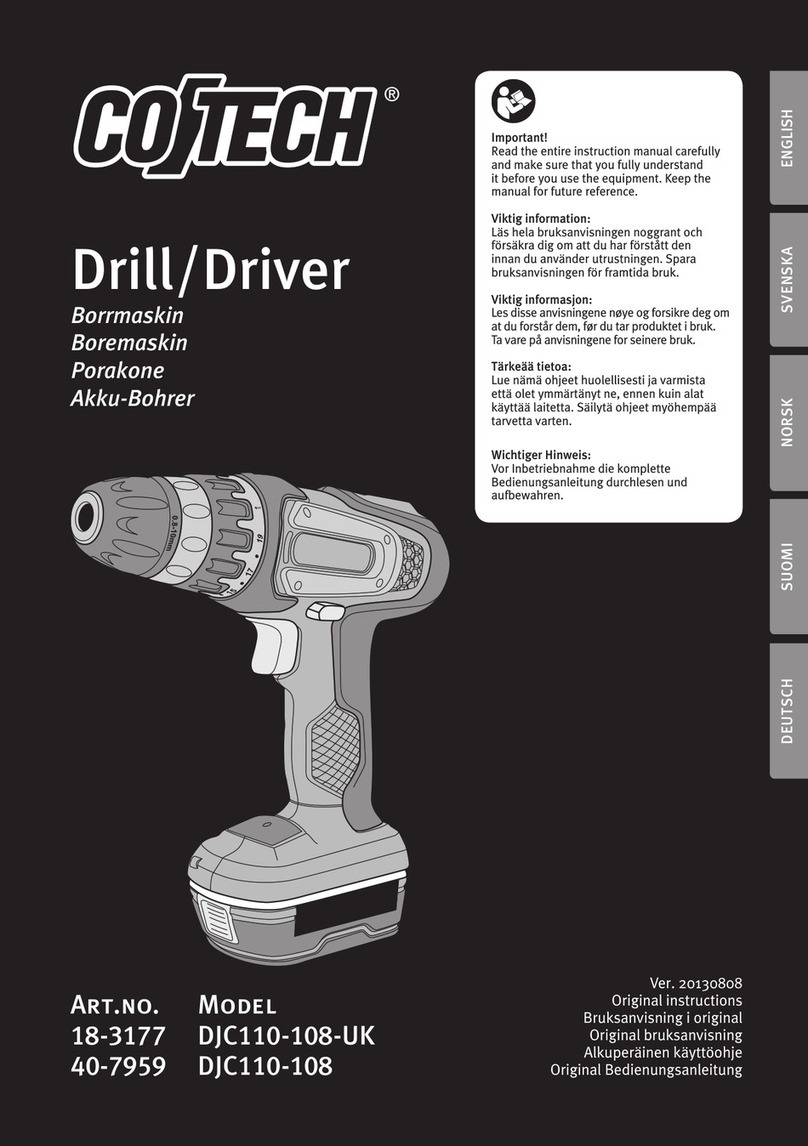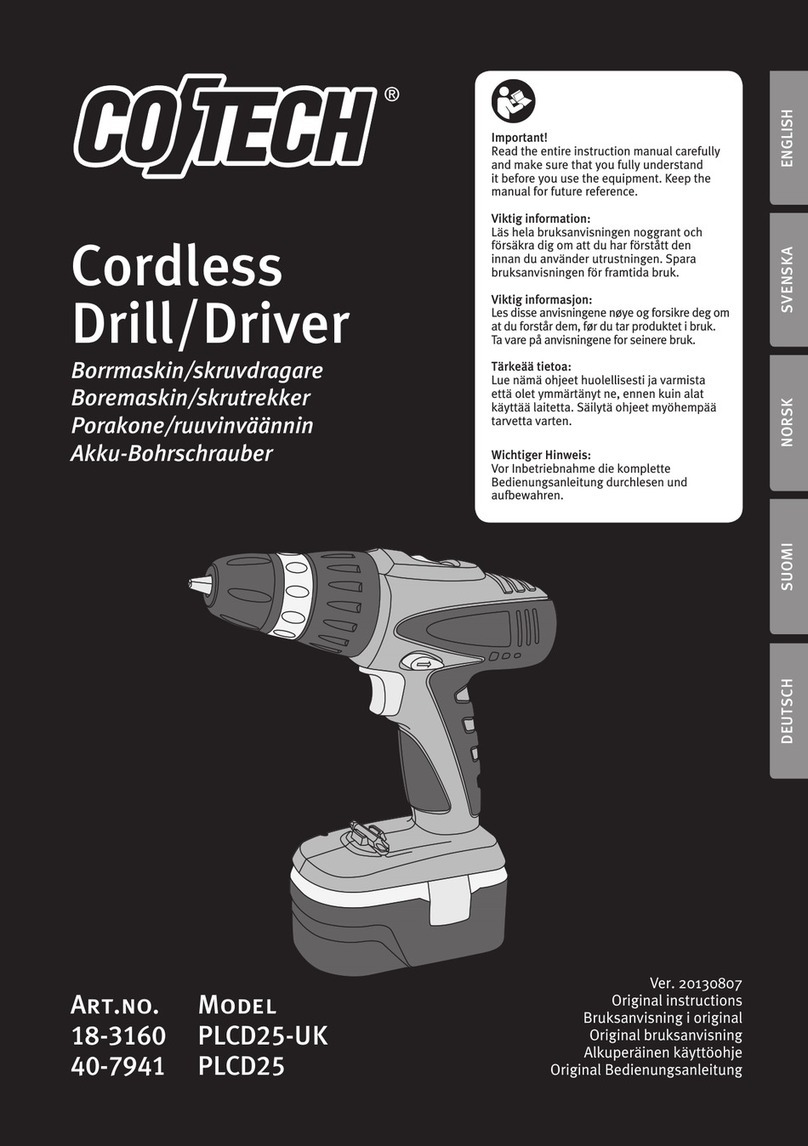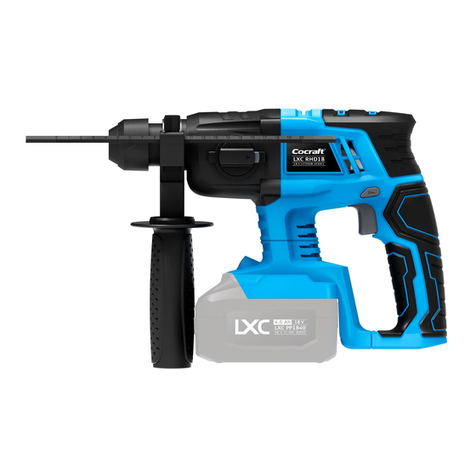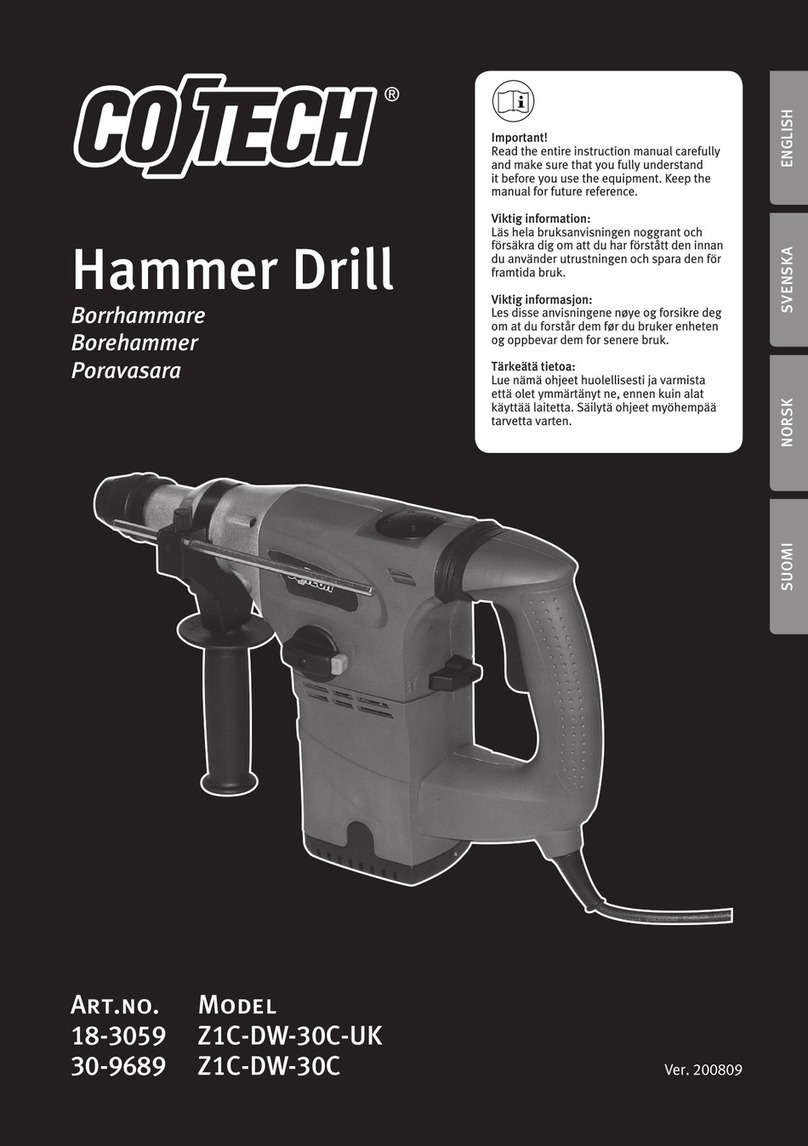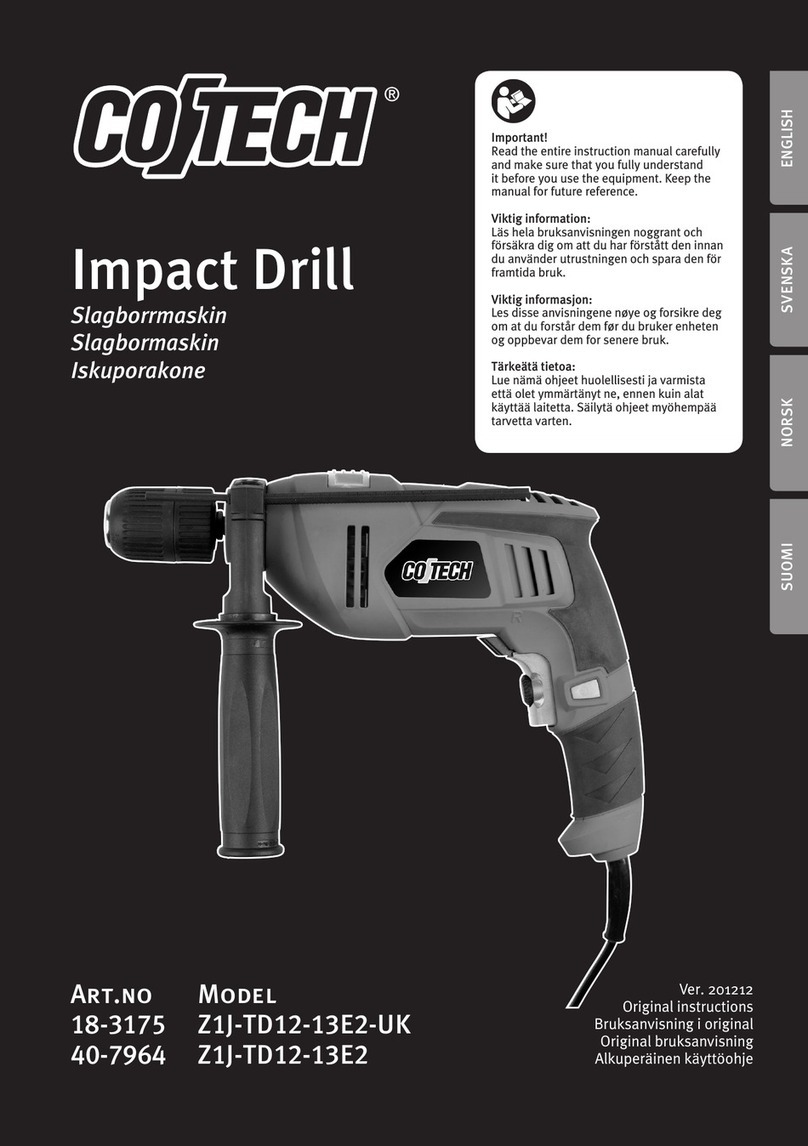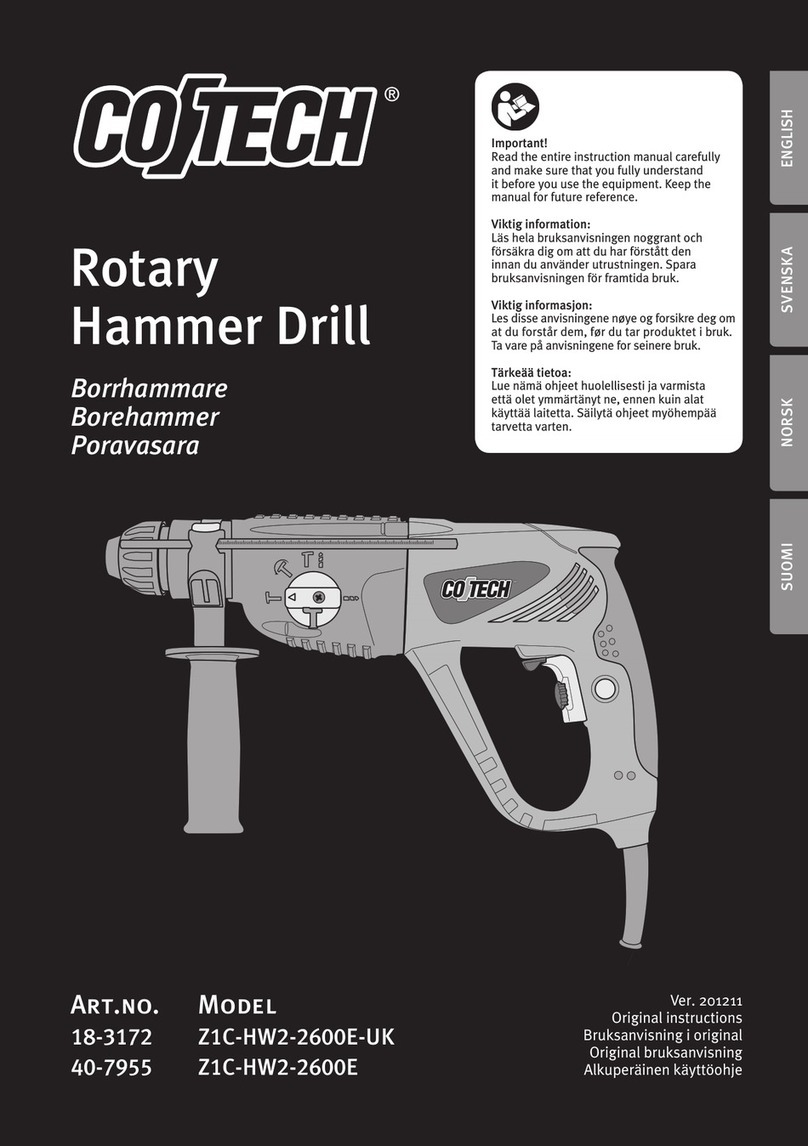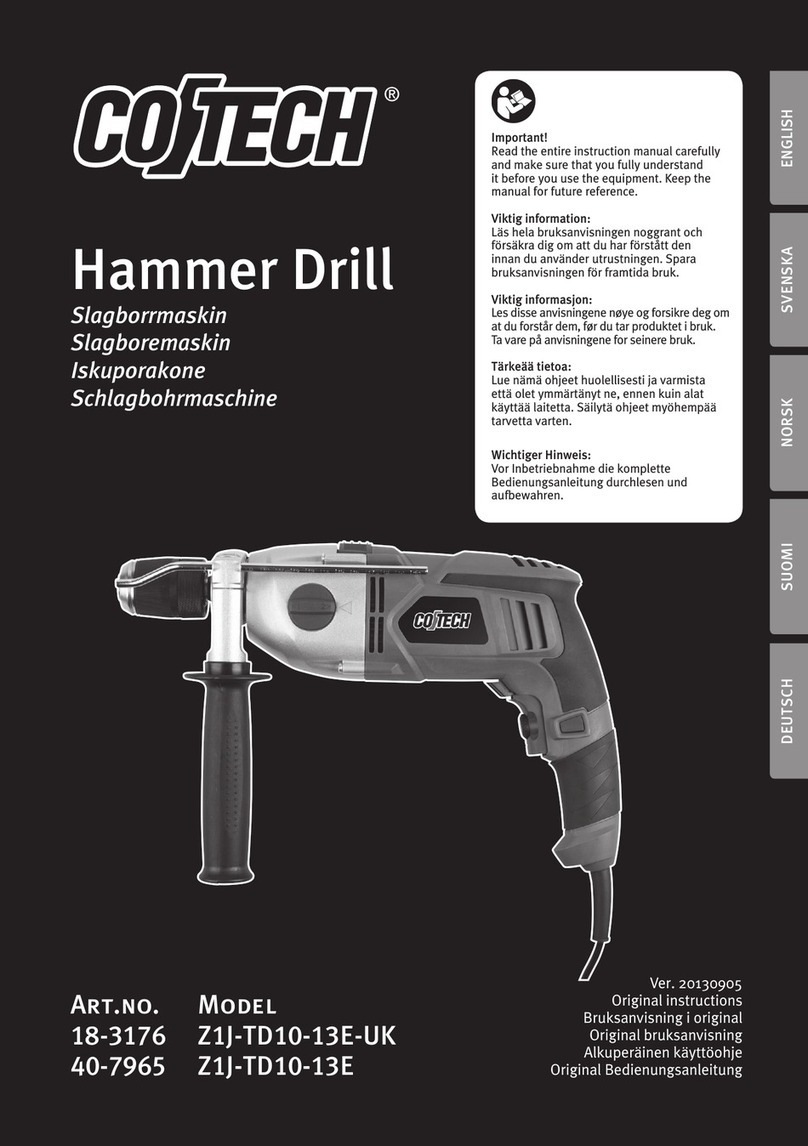
ENGLISH
3) Personal safety
a) Pay attention to what you do and use common sense when using
electrical hand tools. Never use an electrical hand tool if you are tired or
under the inuence of drugs, alcohol or medication. One moment of not
paying attention while using an electrical hand tool may result in serious injury.
b) Use protective equipment. Always use safety glasses. Using protective
equipment such as a face mask, slip resistant protection shoes, a helmet and
ear plugs when needed decreases the risk of injury.
c) Avoid unexpected start. Make sure that the switch is set to OFF before you
connect the device to the wall socket. Never carry an electrical hand tool with
one nger on the trigger or never connect the hand tool to a wall socket when
the switch is set to ON, since it may result in injury.
d) Remove all service tools/keys before switching on the hand tool.
A forgotten service tool on a rotating part of the electrical hand tool may result
in injury.
e) Do not overreach. Make sure you stand steady and well balanced at all times.
This gives better control in unexpected situations.
f) Wear suitable clothing. Do not wear loose tting clothes or jewellery. Keep
hair, clothes and gloves away from movable parts. Loose tting clothes,
jewellery or long hair could get caught in movable parts.
g) If the equipment for suctioning or collecting dust is available make sure
it is connected and used properly. Using technical aids may reduce dust
related hazards.
4) Use and maintenance of the electrical hand tools
a) Do not overdrive the hand tool. Use a hand tool suitable for the work you are
to perform. At the correct rate of feed, the correct tool will carry out the work
better and more safely.
b) Never use the electrical hand tool if the switch does not work properly
to turn on and shut off the tool. All electrical hand tools that can not be
operated by the switch are dangerous and must be repaired.
c) Unplug the lead from the wall socket before making any adjustments,
changes of accessories or storing the electrical hand tool away. These
precautions reduce the risk of unexpected start of the electrical hand tool.
d) Store electrical hand tools that are not being used out of reach from
children. Do not let people unfamiliar with the electrical hand tool or its
instructions use it. Electrical hand tools can be dangerous if they get into the
hands of inexperienced users.
